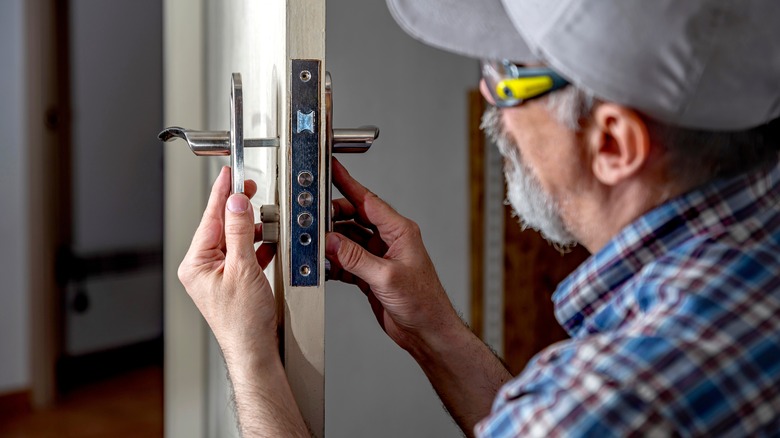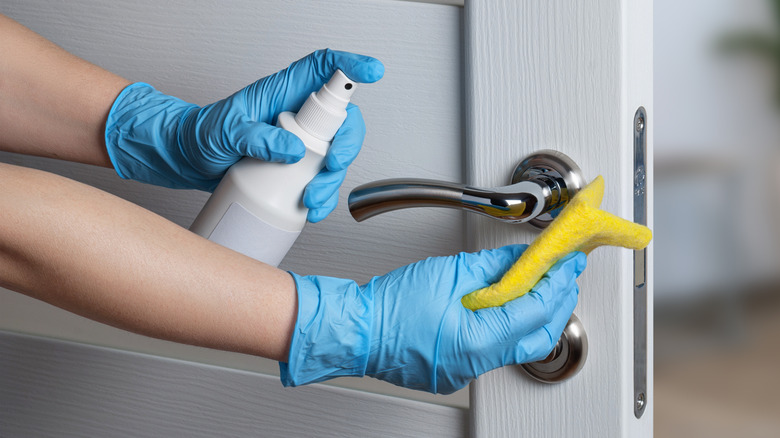How To Clean Your Door's Lock To Stop Sticking
Like any other mechanical device, a door lock requires regular maintenance to function smoothly. A sticky door lock can be a frustrating inconvenience — the good news is that you don't need to be a locksmith to fix the issue. With simple tools like compressed air and graphite powder, you can easily clean the lock, remove debris, lubricate the mechanism, and restore smooth operation. It might also help to double-check that your strike plates are aligned.
Over time, dust, grime, and corrosion can accumulate within your lock, causing the mechanism to stick. These contaminants disrupt the internal moving parts of the lock, making it difficult for your key to engage and turn as it should. Moreover, regularly cleaning your door lock also extends its lifespan. This simple DIY project could potentially save you from the cost and inconvenience of a complete lock replacement down the line. Don't worry, cleaning your door lock isn't as intimidating as it may sound, and you don't need any specialized tools or intricate technical skills.
Conduct proper checks first
Before cleaning your door lock, you need to check if your strike plates are aligned. An unaligned strike plate makes your door stick, disrupting smooth operation. When the latch doesn't align with the hole, your door struggles to close. To fix it, first, observe the misalignment. If it's only slight, you can adjust the plate using a screwdriver. If the misalignment is severe, you may need to increase the size of the hole. Unscrew the strike plate, align it with the latch and mark the spot. Drill out the hole then reattach the plate.
If a misalignment isn't the problem, a dirty door lock is probably the issue, so cleaning is necessary. Gather a few essential supplies, including a can of compressed air, a tube of graphite powder, and a clean cloth or rag. The compressed air is used to blow out any dust or dirt particles lodged inside the lock. Graphite powder, a recommended lubricant for locks, helps to smooth the internal mechanism of the lock. It's best to avoid oil-based lubricants, as these can attract more dirt over time. Remove your key from the keychain for easy handling and wear a pair of gloves to protect your hands from any residue or dirt that might be expelled from the lock.
Cleaning and maintenance
Firstly, insert the nozzle of your can of compressed air into the keyhole. Give it a couple of quick bursts to dislodge any dust or dirt. Next, you have to clean the deadbolt, latch, and any exposed parts of the handles and locking mechanism, ensuring every nook and cranny gets attention. Once done, it's time to lubricate the lock. To apply, squeeze a small amount of graphite powder into the lock, then insert your key and turn it several times. The goal here is to push any stubborn debris toward the back of the lock. This action will also help distribute the graphite evenly throughout the lock mechanism. Remember, a little graphite goes a long way, so don't overdo it.
Finally, wipe your key clean with a cloth or rag. It's vital to keep your key clean, as every time you use it, you could be introducing more dirt into your clean lock. Regularly repeating this cleaning process can help maintain the smooth operation of your lock and increase its longevity. Even after performing all these maintenance tasks, if the locks remain stubbornly sticky, the issue could be due to worn-out keys or a corroded door lock.


